The Air Force Reserve has maintained a flying mission at Hill AFB for more than 60 years. When activated in March 1947, the 419th Group was earmarked to control seven Reserve units, the first of which was a rescue squadron. During a two-year period, the 419th Group gained several components, spanning five separate locations and three Air Force organizations. Group pilots trained until March 1951 when training ceased and the entire 419th prepared for entry into active service. Activated in July 1956 as a component of the Regular Air Force, the group and its three squadrons trained in C-123 assault airlift operations. Over the next several years, the wing logged missions in the T-33, F-80, F-84, C-119, C-124, and C-46 aircraft. (Continued below)
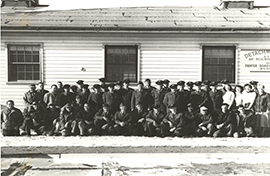

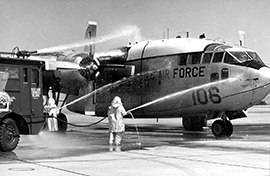
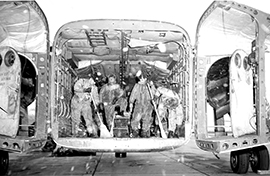
In 1972, the Air Force Reserve modernization program added fighter aircraft which resulted in the unit gaining F-105 Thunderchief aircraft. Consequently, the unit was re-designated the 508th Fighter Group. On Oct. 1, 1982, the unit was upgraded from a group to a wing, being re-designated the 419th Tactical Fighter Wing. It was the last operational F-105 unit in the Air Force until its conversion to F-16s in January 1984. (Continued below)
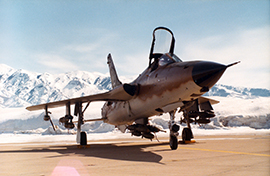
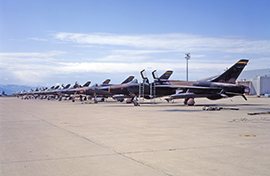

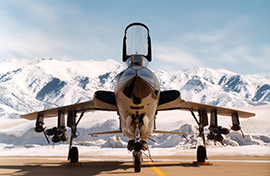
In 1983, the wing’s 466th Fighter Squadron “Diamondbacks” became the first Air Force Reserve unit to fly and maintain the F-16 aircraft. Within only two years, the squadron earned top honors at “Gunsmoke,” the Air Force’s premier worldwide gunnery meet.
The 466th FS deployed to Incirlik Air Base, Turkey, in support of Operation Northern Watch in 1994 and then went on to support Operation Southern Watch at Al Jaber AB, Kuwait, in 1998. While in Kuwait, the 466th FS became the first F-16 unit to deploy precision guided munitions in combat. In 1999, while again deployed in support of ONW, the Diamondbacks became the first F-16 unit to employ the Litening II targeting pod in combat.
While enforcing the no-fly zone over Iraq in support of OSW in the days following the 9/11 terrorist attacks, the Diamondbacks were tasked to fly classified combat missions into Afghanistan. They were the first F-16 unit deployed in Operation Enduring Freedom and are credited with destroying important Al Qaeda assets, and provided close-air support to ground troops. In the years following 9/11, thousands of 419 FW Reservists volunteered to deploy in support of the “War on Terror” around the globe. (Continued below)
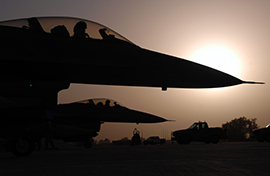
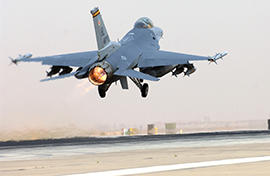
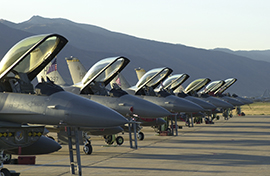

In 2003, the 466th FS became the first to fly F-16 combat missions during Operation Iraqi Freedom when the squadron’s pilots were called to duty to a classified location after initially deploying to Prince Sultan AB in support of OSW. The Diamondbacks again deployed to Iraq in 2005 to fly close-air support missions out of Balad AB to protect U.S. and allied ground forces.
In 2007, the 466th FS said goodbye to its F-16 aircraft when they began flying and maintaining a shared fleet of F-16s alongside the 388th FW in a Total Force Integration initiative aimed at capitalizing the strengths of the active duty and Reserve.
Fifteen personnel from the wing’s 67th Aerial Port Squadron deployed to Haiti in 2010 to join multinational relief efforts in Port-au-Prince following a catastrophic earthquake.
Since the TFI, the Diamondbacks have joined forces with their active duty counterparts in the 4th FS, 34th FS, and 421st FS in support of numerous OIF, OEF, Operations Freedom’s Sentinel and Resolute Support deployments. The 466th FS has also regularly participated in Theater Security Package missions to Kunsan AB, Republic of Korea, and has supported alert missions as part of the ongoing defense of U.S. airspace known as Operation Noble Eagle.
In September 2015, the 419th FW welcomed the Air Force’s newest fighter aircraft, the F-35A, to Hill Air Force Base and began training and transitioning pilots and maintainers to the fifth-generation jet. (Continued below)
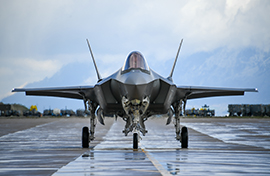

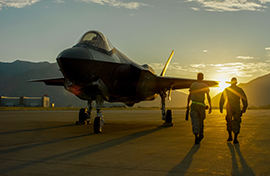
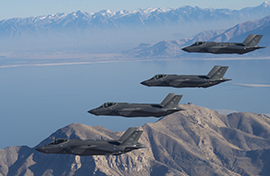
In the spring of 2017, the Diamondbacks led Hill Air Force Base’s final F-16 deployment to Spain for NATO training. Hill’s fleet of F-16 aircraft departed for Hollman Air Force Base, New Mexico, in September 2017 at which time 466th FS pilots began flying the F-35A exclusively. In 2017, the wing’s pilots and maintainers joined the 388th FW for the F-35A’s first deployment to Europe in April and the aircraft’s first Indo-Asia-Pacific deployment for a Theater Security Package mission in November.
In April 2019, 419th FW pilots, maintainers, and support personnel deployed to Al Dhafra Air Base, United Arab Emirates, as part of the very first F-35A deployment to the Middle East. Working with the active duty 388th FW, they also conducted the F-35A’s first combat strike. They would deploy a second time to the Middle East in the fall. May 2019 kicked off an important F-35A deployment to Europe as part of a Theater Security Package that took the jet through several countries with a mission to maintain a combat-ready posture, deter threats, and support U.S. allies. By December 2019, Hill’s fighter wings received their final F-35A, bringing the total number of jets to 78.
In May 2020, pilots, maintainers, and support personnel departed for a third combat deployment with the F-35A to the Middle East.
In 2023, the 419th recognized Airmen for their hard work during the first in-person awards ceremony in two years. Members of the wing maintained readiness at exercises such as Honey Badger and Northern Edge. Some proved their skill in the William Tell meet in Georgia. The wing deployed a group to the Middle East with the 421st Fighter Squadron and a group to Japan with their 388th counterparts. Col. Ronald Sloma assumed command on the wing, September 9, 2023.
(Current as of December 2023)